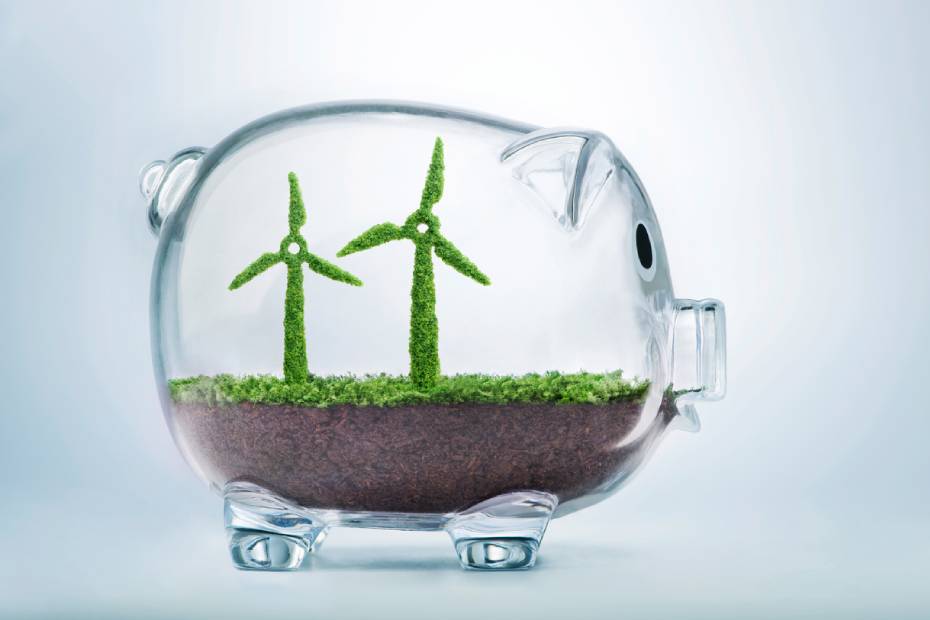Published February 6, 2023 • 4 Min Read
Sustainable living may conjure up images of electric vehicles or organic apples. But to lead a green life, you don’t have to always overhaul your everyday routine or pay premiums for Earth-friendly brands.
There’s so much we can do to lighten our impact on the planet as well as our expenses, from buying less to making more conscious decisions on how we live. Ready to adopt a more sustainable life on a budget? We’re sharing 10 simple ways from Goodside to get you started.
1. Keep your cell phone longer
A growing demand for new smartphones comes at a cost to the planet: The emissions produced to make a single phone is equal to the emissions that one phone will produce over the course of a decade. Waiting longer to replace your phone can reduce the industry’s impact on climate change, as well as save you money.
2. Buy preloved over new fashions
Any new product begins its life long before you take ownership. Resources are extracted and processed, then the product is made and packaged before it’s delivered to you or a store. All of that emits greenhouse gases (GHGs). Clothing and textiles, for example, contribute about 10 per cent of the world’s annual global carbon emissions. Rather than update your wardrobe regularly, consider shopping for second-hand clothing. The rise in vintage clothes makes it easy to fuel your inner fashion diva — not your carbon footprint.
3. Repair what you have
Before sending that faded sofa to the dump or replacing worn outerwear, consider revamping your things with reupholstery, repair or refurbishment. You may be surprised at the number of businesses that fix up tired goods and save you money, to boot.
4. Adjust your thermostat
Our dwelling spaces are responsible for about 75 per cent of our personal carbon footprints. All those conveniences that power our households — running water, heat and AC, electricity — are directly or indirectly responsible for GHGs. Turn your thermostat down by two degrees in the winter and up by two degrees in the summer. Maybe even try three or four degrees each way. (Keep blankets handy for frosty days.)
5. Buy less meat and more plant-based proteins
Removing or limiting how much meat you eat can have a serious impact on climate change when you consider livestock production accounts for about 70 percent of all agricultural land use and is responsible for 18 per cent of GHGs. Consider swapping out meat on your plate for plant-based proteins. For example, nutrient-packed legumes, which include chickpeas, beans and lentils, are also more affordable.
6. Purchase bulk goods without the packaging
Load up on your basic staples at the bulk bins where packaging and cost is most minimal. You can even bring your own reusable containers at some stores for an added Earth-loving bonus.
7. Buy seasonal local produce
Seasonal produce not only tastes better, but it’s also better for the environment thanks to shorter shipping distances and less packaging by smaller farms that often follow more sustainable practices. Keep a box or reusable bags in your car for quick stops at local markets or along country roads dotted with fruit and vegetable stands.
8. Freeze your food before it spoils
Despite your best efforts to meal plan and avoid waste in food and cash flow, there may be some days when things don’t go according to plan. Cut back on the amount of food you throw out by storing items before they go bad. You might be surprised at all the things you can freeze, like shredded cheese, cooked rice, even beans.
9. Carpool when possible
Transportation is one of the largest sources of pollution in North America. Sharing a drive with others, whether it’s on the way to work or to your kid’s soccer practice, is an easy way to save on fuel and cut GHG emissions. With volatile prices at the gas pumps, it’s sure to make a difference on your wallet, too.
10. Book vacations close to home
Planning a family trip or weekend outing? Consider this before making your booking: Air transport is responsible for about 2.5 per cent of the world’s GHG emissions. An easy way to limit your carbon footprint is to simply fly less by vacationing closer to home or by planning a unique staycation. Better yet, explore the nature right outside your door by hiking, swimming, camping or geocaching.
These are just some of the actions you can implement to cut your carbon footprint and control your spending in the process. The best approach is to start small with two or three changes at a time – making them all at once can be too overwhelming – and incorporate earth-friendly habits consistently in your new sustainable lifestyle.
A version of this article was originally published by Goodside, makers of a real-time carbon footprint app.
This article is intended as general information only and is not to be relied upon as constituting legal, financial or other professional advice. A professional advisor should be consulted regarding your specific situation. Information presented is believed to be factual and up-to-date but we do not guarantee its accuracy and it should not be regarded as a complete analysis of the subjects discussed. All expressions of opinion reflect the judgment of the authors as of the date of publication and are subject to change. No endorsement of any third parties or their advice, opinions, information, products or services is expressly given or implied by Royal Bank of Canada or any of its affiliates.
Share This Article






